The temple town of Udupi in Karnataka is famous for more reasons than one. A bustling town, a little over 400 km from Bangalore, Udupi is synonymous with the Krishna temple or Krishna mutt as it is also known. With several beaches and a picturesque countryside, this coastal town is one of the most visited in the state.
 One of the entrances of the renowned Udupi temple
One of the entrances of the renowned Udupi temple
Apart from being a town of utmost religious significance, Udupi is renowned for its cuisine so much so that it is considered as the holy grail for vegetarian food lovers.
Origins
There are several theories associated with the origin of this world-famous cuisine, the most popular being that it has its roots in the “Ashta mattas” (8 mattas) of the town. Others believe that the tradition of feeding thousands of devotees in the Krishna mutt led to the evolution of a standard method of cooking that was quick, hygienic as well as highly palatable. There is also an interesting theory that the delectable dishes were invented to win the heart of Lord Krishna who is not only the soul of the town but also a food lover.
Irrespective of its origin, Udupi cuisine has always been the forte of the native Shivalli Brahmins and was associated with large scale feasts like weddings and festive celebrations.
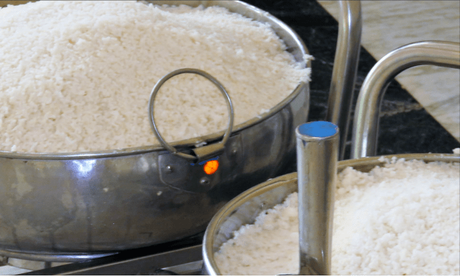
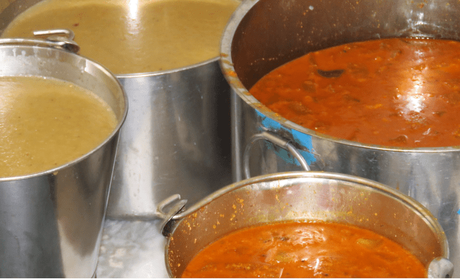
Food of the Gods
Udupi cuisine is strictly vegetarian, “Sathvik” and is characterized by the ample use of rice, coconut, coconut oil, jaggery and freshly ground spices like coriander, chillies and cumin. The vegetables that are used are also highly restricted in that, not only garlic and onion is prohibited as it is considered “Tamasic” but also vegetables like tomato, cabbage, radish and cauliflower are generally not used. It is believed that saints like Sri Madhwacharya and Sri Vadiraja classified vegetables into ‘Bhogya’ i.e eatable and ‘Abhoya’ non-eatable.
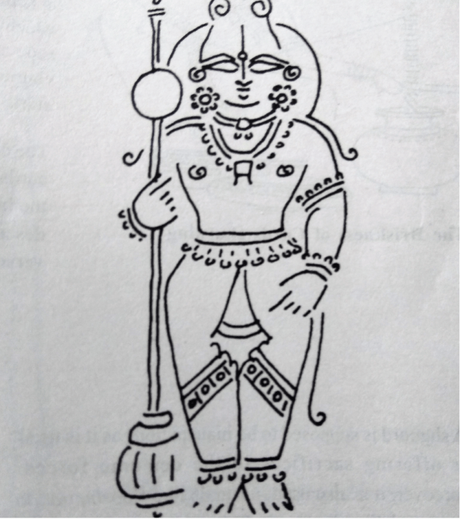
Apart from gourds, pumpkin, cucumber, red amaranth leaves and jackfruit, one of the most popular vegetables used is the “matti gulla” which is a local variety of round, green brinjals grown in the neighbouring village of Matti. The seeds of these brinjals is said to have been given by saint Vadiraja himself. In fact, the first produce of these brinjals harvested is offered to Udupi Lord Krishna. The food is highly healthy in that it is based on the premise that the food we eat should be in accordance to the climate and seasonal changes.
Flavourful dishes
Apart from the lip smacking rasams, sambhars and chtuneys, “thambulis” are a signature creation of the cuisine. Typically had during summers, “thambulis” are essentially vegetables like cucumber, greens etc that are cooked, seasoned and finally mixed with buttermilk. It is served as an accompaniment to rice. Other special dishes include the neer dosa (thin, soft dosas made from grinding rice and fresh coconut), kadabu (made from idli batter but cooked in jackfruit leaves), goli bajji (refined flour rounded fritters) and shavige (home-made rice noodles).
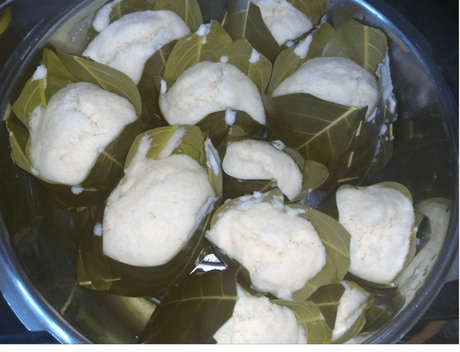
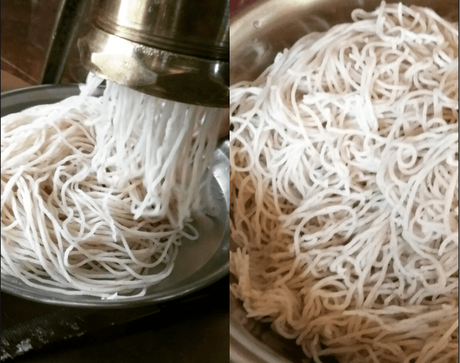
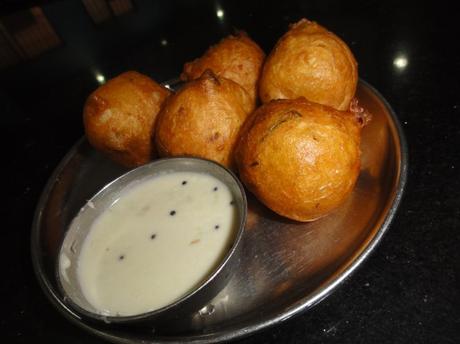
The typical Udupi meal is served on a banana leaf and there is a strict order in which the meal is served and consumed. Salads, curries and payasam are generally served and eaten first followed by rice with rasam and sambhar and curds/buttermilk is consumed last.
All in all, Udupi cusine has gained a place in the culinary world like none other. While the late Sri Krishna Rao of Woodlands Group of hotels is credited with placing the “Udupi hotel” brand on the international map, the very addition of the word “Udupi” to South Indian restaurants has served as a launch for numerous outlets given that it adds incredible value.
This article was originally published in The Tribune here. Click here and here to read other interesting articles on food.
